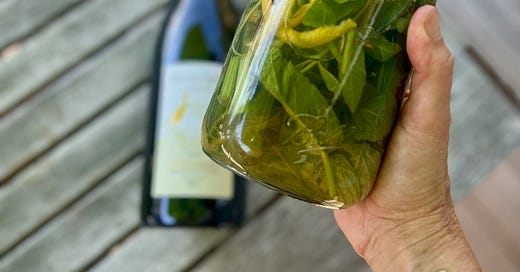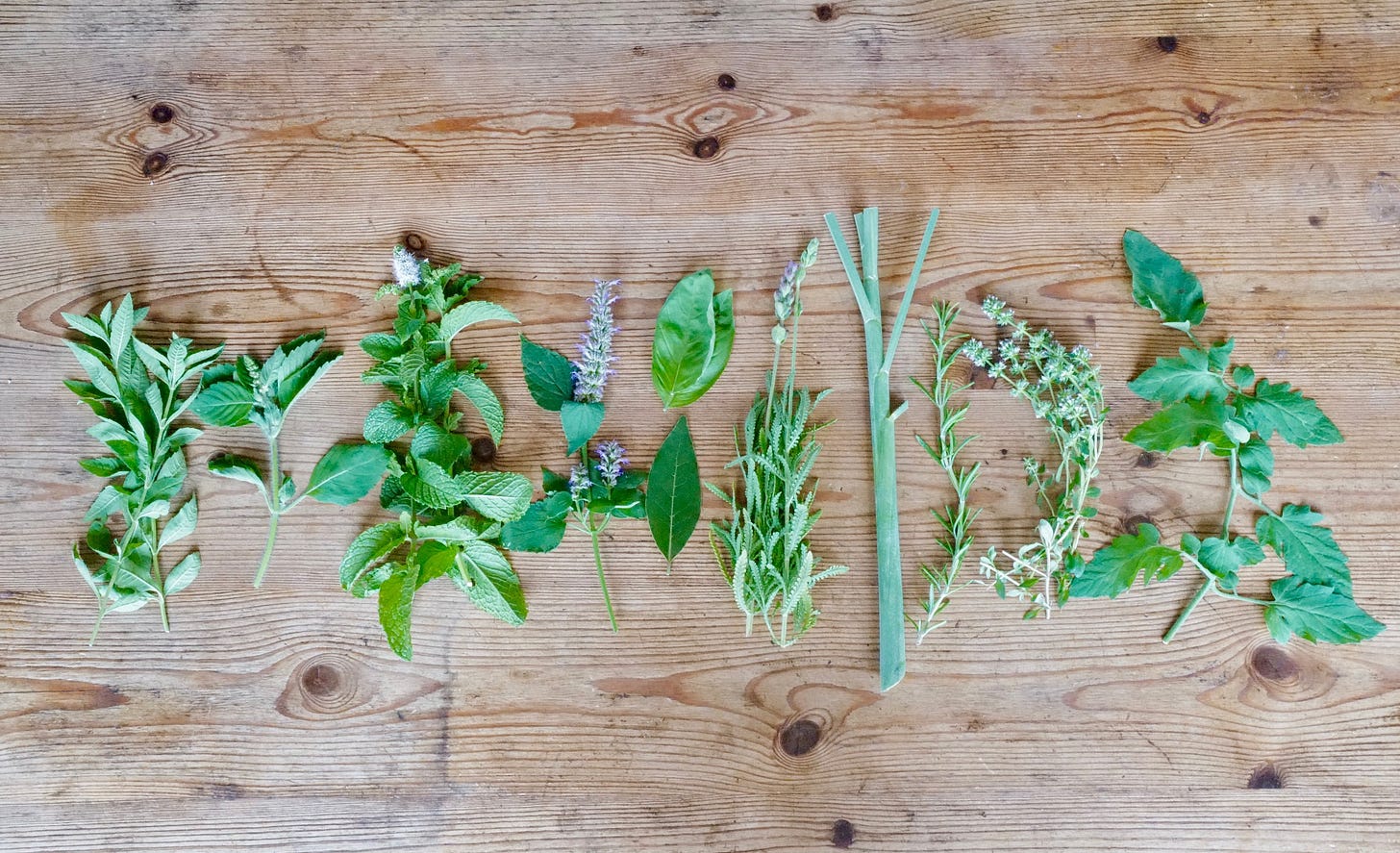Hello! If you are just picking up the Grape to Table newsletter, thanks so much for joining to learn more about wine, food, and life. It’s been a FULL YEAR of the newsletter (yahoo)! If you are interested you can read my origin story (click here to read), or just dive straight into fun content focused on meaningful time at the table with delicious wine and food. For now, my newsletter is free and you can find all the content by clicking here – basically a little Grape to Table website created by the great folks at Substack. As always I really appreciate when you hit the like button as it helps get this newsletter in front of more people :) Now onto this week’s content…another recipe: My Garden Vermouth! As always I certainly appreciate it if you hit the like button as this helps more folks find my humble little newsletter and hopefully spread some simple joy.
Once upon a time I drank all sorts of adult beverages…I went through a big Bourbon phase and enjoyed beaucoup Gin & Tonics while living in New Orleans. Then like many Charleston residents I came to appreciate the myriad of delicious Old World beers via Scott and Rich at the Charleston Beer Exchange when they first opened.
However, I have to admit that ever since I thoroughly went down the wine rabbit hole I rarely venture outside my preferred adult beverage genre. Truthfully, I have become a total light weight since the heady days of New Orleans, and these days a Belgian Triple would most definitely put me under the proverbial table!
But...I do love some of the offshoots of the wine category, specifically vermouth and amaro. So imagine my delight back when I was managing Edmund’s Oast Exchange (rip), and a co-worker/well known Charleston bartender Jessica Backhus turned me onto the Garden to Glass cocktail book, which includes a recipe for making your own vermouth. Jessica worked with the author Mike Wolf at Husk in Nashville (and she is featured in some of his other books!).
The entire Garden to Glass book is a dream if you have even the slightest interest in the natural world and cocktails. It’s filled with all sorts of enticing concoctions and tales like making your own Nocino (a bitter liqueur from freshly foraged walnuts)!
But the very first recipe in the book (and the one that stole my heart): Gardener’s Vermouth. While vermouth is basically an aromatized wine that’s generally fortified, this one just calls for adding some simple syrup to your favorite white wine and infusing with herbs from your garden. And of course this is the time of the year to tackle such a project if you live in the northern hemisphere where many gardens are at their peak. (Or if you live in the southeastern United States like me, they are just past their peak – so you need to act quickly!)
This year was my second time making Garden Vermouth, and each time I have improvised just a bit based on what I have on hand (as should you!). I did manage to use all herbs from my garden and then bought some organic, dried wormwood online.
Perhaps it’s sacrilegious, but both times I used one of my favorite bottles of affordable Chenin Blanc from the Loire Valley. And within days I had a true nectar of the gods/godesses!! I usually enjoy my very own garden vermouth with sparkling water and a lemon twist but feel free to make your own favorite aperitif. Perhaps add some gin for something a bit more robust!
Below is my rendition of Mike’s recipe. And click here to buy his book online.
My Garden Vermouth
1 lemon
1 bottle dry white wine
3 ounces rich simple syrup (2 parts sugar: 1 part water)
2 tomato leaves, torn
2 basil leaves, torn
1 bay leaf
3 sprigs mint
2 sprigs thyme
2 sprigs parsley (or parsley flowers!)
2 sprigs lemon verbena
2 sprigs lavender
1 sprig fresh wormwood (or 1 teaspoon dried)
1 stem of rosemary
1 stalk of lemongrass
5 honeysuckle blossoms
Preheat the oven to 250 degrees. Peel the lemon and place peels on a baking sheet in the oven for about 20 minutes, until relatively dried out. (Save the rest of lemon for salad dressing!)
Transfer dried lemon peels to a sealable container with remaining ingredients (I used a very large Mason jar.) Shake to combine. Store in the refrigerator and allow ingredients to infuse for 3 days. Shake each day to encourage flavor development. After 3 days, strain out herbs and return your vermouth to the sealable container and use over the next 2 months (if it lasts that long)!
P.S. Don’t stress if you look at this list and feel overwhelmed. This time I did not have parsley or honeysuckle, and it turned out just fine :)







Oh my goodness I just started foraging and can't wait to try this.
I’m going to make a version of this! I have hyssop in my garden because it sounded so medieval!! Haha. I don’t have the wormwood. What does that do?